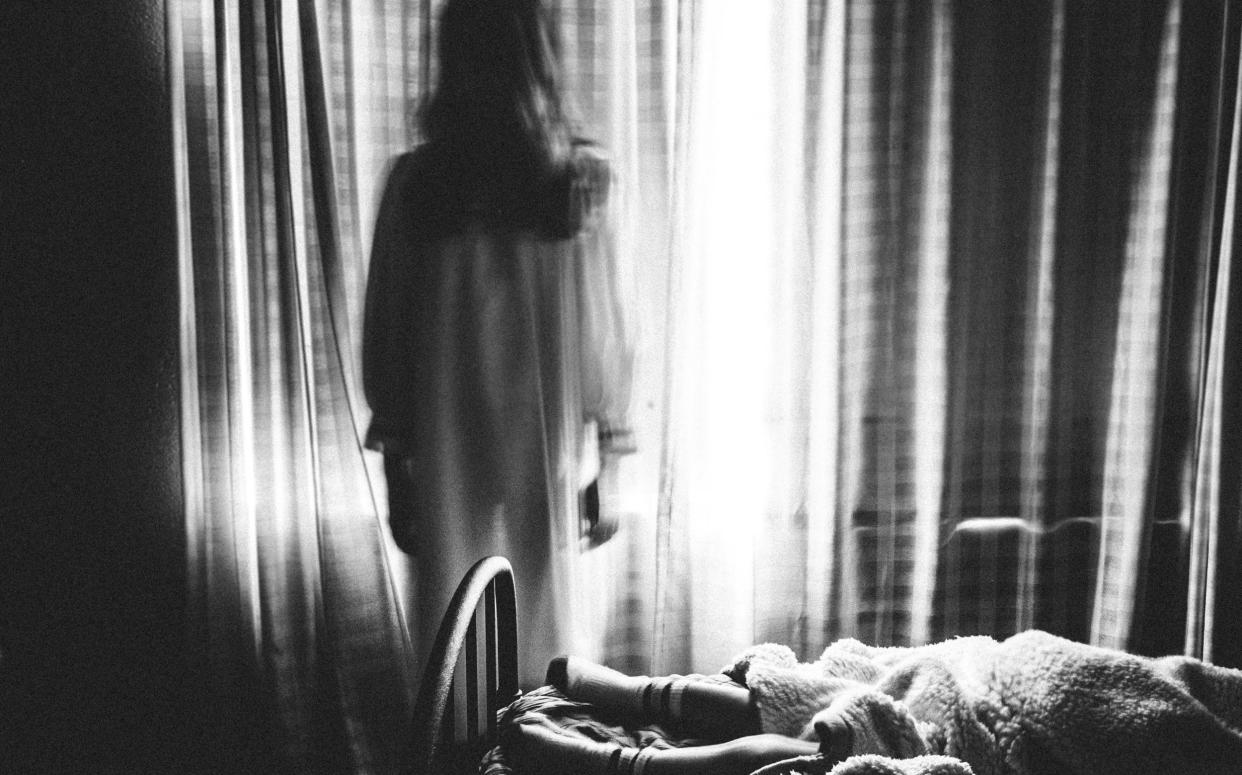Sleep paralysis demons: What are they and how to handle them

It sounds like the start of a horror film: a shadowy figure at the end of your bed, a faceless presence sitting on your chest. It doesn’t matter which of these terrifying scenarios plays out when you wake up from a deep sleep, they all have one thing in common: you can’t move, run away or cry out for help. You are fully conscious, yet you are frozen to the spot and unable to escape your sleep paralysis demon. So what is going on? In this article, we aim to find out:
What are sleep paralysis demons?
Sleep paralysis demons are nightmarish hallucinations that often accompany episodes of sleep paralysis. This occurs when the temporary paralysis, which is a normal feature of REM, the stage of sleep called rapid eye movement, where dreaming takes place, continues for a few seconds or minutes after waking. As the line between sleep and wakefulness is blurred, sufferers see, hear or feel things that are not really there. One study reported that out of 185 patients diagnosed with sleep paralysis, more than half (58 per cent) sensed a presence in the room, usually something non-human, and 22 per cent actually saw a person in the room – usually a stranger.
Prof Chris French, head of the Anomalistic Psychology Research Unit at Goldsmiths, University of London, says: “The content of the hallucinations experienced during an episode of sleep paralysis can vary enormously, but certain themes tend to occur more often than others. One of these is that of demons, as beautifully illustrated in a famous painting, The Nightmare by Henri Fuseli, dating back to 1781.
“In Europe in the Middle Ages, sleep paralysis episodes were commonly interpreted as attacks by sex-crazed demons who would have their wicked way with their paralysed, helpless victims. The male demons were referred to as incubi and the females were known as succubi.”
Hypnagogic and hypnopompic hallucinations
There are two main types of hallucinations associated with sleep paralysis, both of which can seem very real – and incredibly frightening:
Hypnagogic hallucinations occur when falling asleep
Hypnopompic hallucinations occur when waking up
Both tend to happen when you are partially conscious during REM, so there is a tendency to see a distorted version of what is already there: a draught from the window conjures up a shadowy figure hiding behind the curtains, or a pile of cushions is transformed into a monster emerging from under the bed.
How do sleep paralysis demons feel to someone who is experiencing them?
“Hallucinations can be classified into three main categories: intruder, incubus, and vestibular-motor (V-M) hallucinations,” explains Betul Rauf, PhD candidate in Sleep Research at Goldsmiths, University of London. “Intruder hallucinations include sensing and/or seeing something threatening in the room.
“Incubus hallucinations, which often tend to co-occur with intruder hallucinations, are marked by sensations of pressure on the chest, along with feelings of suffocation or choking. Unlike intruder and incubus hallucinations, V-M hallucinations are sometimes associated with feelings of bliss. These hallucinations involve ‘illusory movement experiences’, such as sensations of floating, spinning, or flying, as well as perceptions of changes in body position or size.”
These hallucinations are very different from nightmares, as Rauf explains: “Sleep paralysis demons manifest when the body is temporarily immobilised while the mind is awake, whereas nightmares unfold within a dream narrative and lack the physical sensations of paralysis.
“In nightmares, individuals usually maintain the ability to move or respond within the dream scenario, despite potential temporary freezes due to fear. In contrast, during sleep paralysis, they experience a temporary loss of muscle control, a defining feature that sets it apart from nightmares.”
What causes sleep paralysis demons?
Experts believe that there is a link to stress and anxiety, post-traumatic stress disorder (PTSD), sleep deprivation and substance abuse. Research indicates that many people report stressful life events or emotional changes before these episodes, and there is also a link to the neurological condition narcolepsy, which interferes with the brain’s ability to control wakefulness.
Dealing with sleep paralysis demons
The best way to banish sleep paralysis demons is to understand that they’re not real – and that the paralysis and hallucinations will dissipate within a few minutes. Learning how to interrupt episodes when they are happening can also be useful.
Betul Rauf recommends “disruption strategies” – such as trying to make small, deliberate movements, such as repetitive blinking or wiggling fingers and toes, to end the paralysis. Some experts believe that practising lucid dreaming – where you learn to take control of your dreams, however fanciful that sounds – can also help sufferers to overcome these frightening hallucinations. Some of these techniques involve waking yourself up with an alarm in the middle of the night or after five hours of sleep and actively telling yourself to remember you are dreaming, known as the “wake back to bed” method, which has proven effective for some.
How do you prevent sleep paralysis?
Prioritising sleep hygiene, such as sticking to a regular bedtime and keeping screens out of the bedroom, and ensuring you get at least seven hours’ sleep can reduce the risk of encountering sleep paralysis demons. It is also helpful to keep a sleep diary to help identify any triggers, and take steps to manage stress and anxiety. If episodes are becoming more frequent or severe, low doses of medications such as antidepressants, clonidine and clonazepam can help to break the cycle.

 Yahoo News
Yahoo News 
